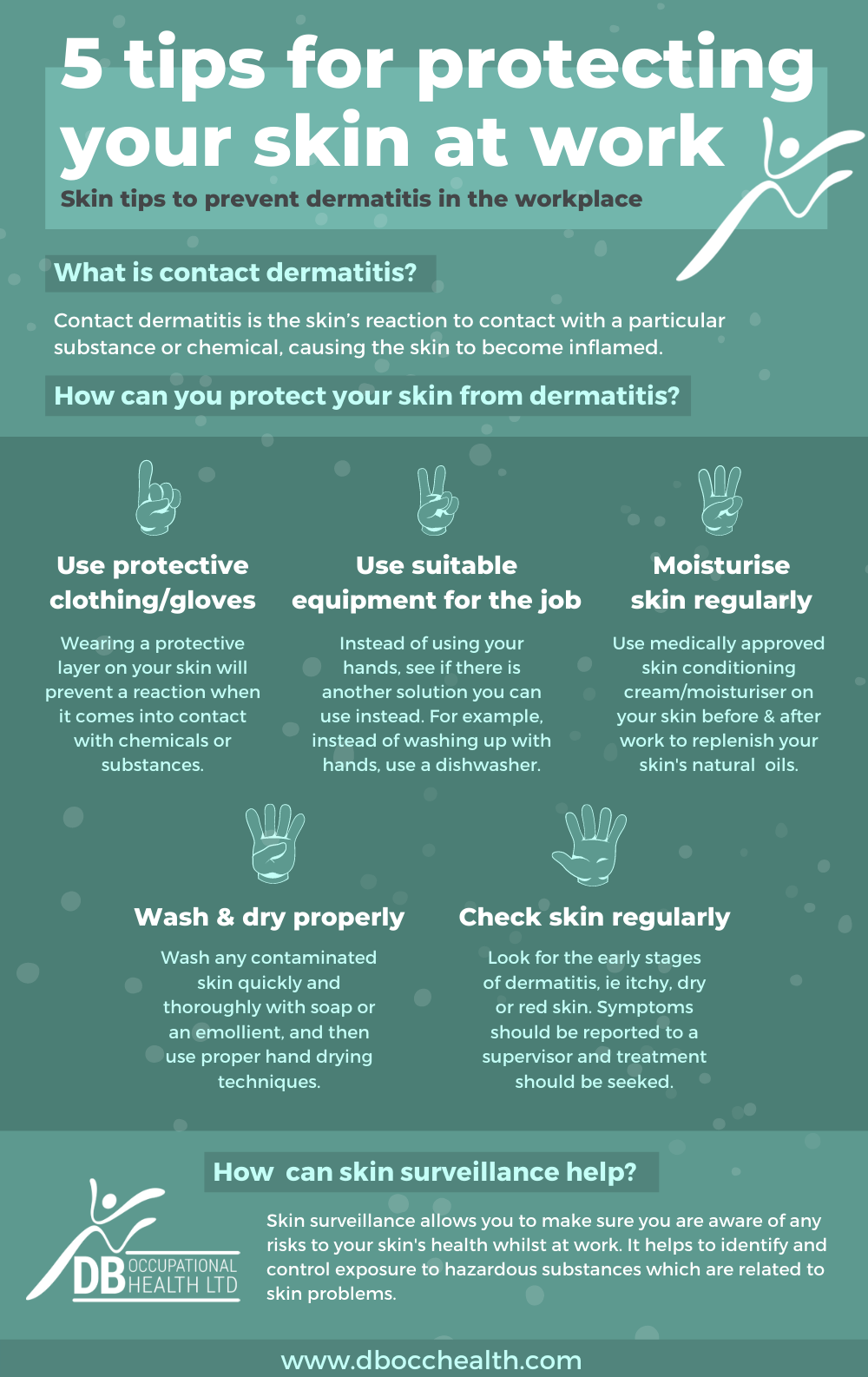According to the HSE, there are currently around 17,000 people currently affected by skin problems as a result of their work. Dermatologist services, as part of a wider health surveillance service, help to identify and control exposure to hazardous substances which are related to skin problems caused by work. As an employer, it is your legal obligation to ensure that these risks are controlled and that your employees have a safe working environment.
Purpose of Dermatology Services
The purpose of our dermatology service is to provide skin surveillance and skin assessments as part of your wider health surveillance program with us. Work-related skin diseases are common across a range of industries and occupations, so it is important to make sure you are aware of any risks to your employee’s health. Whether your employees do frequent hand washing, touch chemicals or contaminated equipment or are simply exposed to various elements in the air, those risks to their health should be controlled as far as is reasonably possible.
Legal Requirements around Skin Surveillance
Is skin surveillance something you must look at by law? Yes! The law states that employers must control exposure to hazardous substances and materials that cause ill health. Whether this is via direct contact to the skin, or through materials that enter the body through the skin and cause problems elsewhere in the body.
However, this doesn’t stop at employers. Employees must also comply with the Control of Substances Hazardous to Health Regulations 2002 (as amended) (COSHH). They require employees to:
- Assess any potential risks
- Provide measures to control any risks
- Provide appropriate instruction and training
- Provide a health surveillance service where appropriate
You can find more detailed information on the legal requirements surrounding dermatology surveillance over on the HSE’s website.
High-Risk Industries
- Catering
- Construction
- Dentistry
- Hairdressing
- Health services
- Metal machining
- Motor vehicle repair
- Printing
Common Work-Related Skin Diseases
Some of the most common skin diseases we identify and treat through our dermatologist skin screening in the workplace are as follows:
- Dermatitis (occupational dermatitis)
- Urticaria
- Skin cancer
- Sun exposure
- Bacterial infections
- Fungal infections
However, we have experience in diagnosing and advising preventative measures you can put in place for a wide range of skin diseases that may affect your employees at work.
Managing Skin Risks
Once we have worked with you to identify a list of occupational skin diseases that are a risk to your employees, we will work with you to prevent and control these risks. Some of the measures we may put in place include:
- Removing the substance (if this can be done)
- Substituting substances for a lower risk alternative
- Reduce human contact with the substance where possible (look at automating the process, or introducing long-handled tools to minimise skin contact)
- Creating designated ‘clean’ and ‘dirty’ areas to limit contamination
- Introducing PPE
- Ensuring adequate washing facilities are provided
How We Can Help
We can help you stay fully compliant with legal regulations through our specialist health surveillance services. Contact us to discuss your requirements and we’ll help you ensure your workforce remains safe and healthy.
Request a callback
Tell us your name and number below and we'll give you a callback to discuss your requirements.
